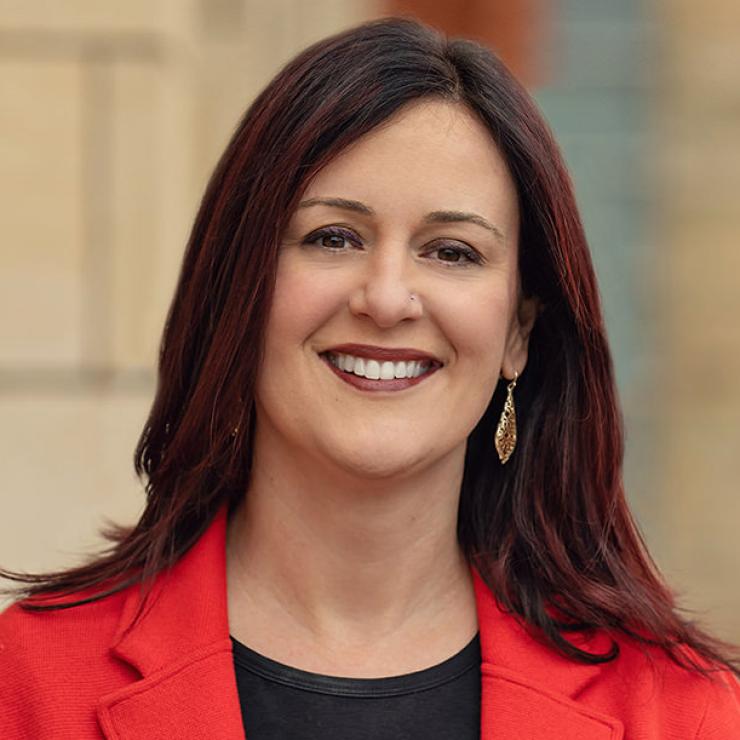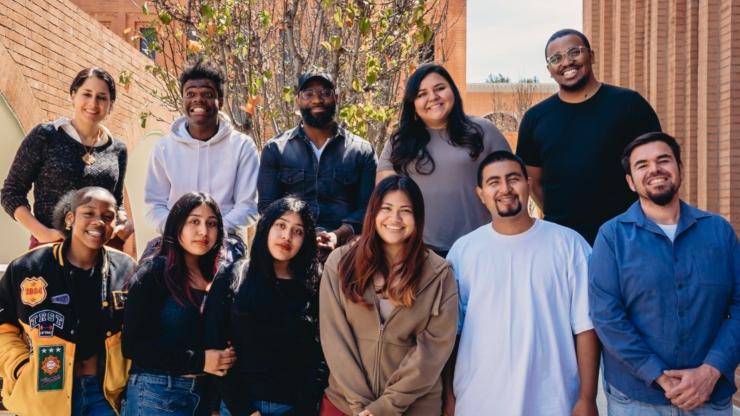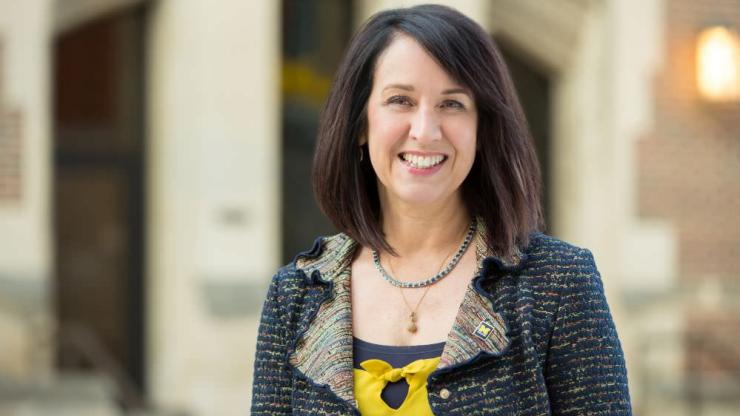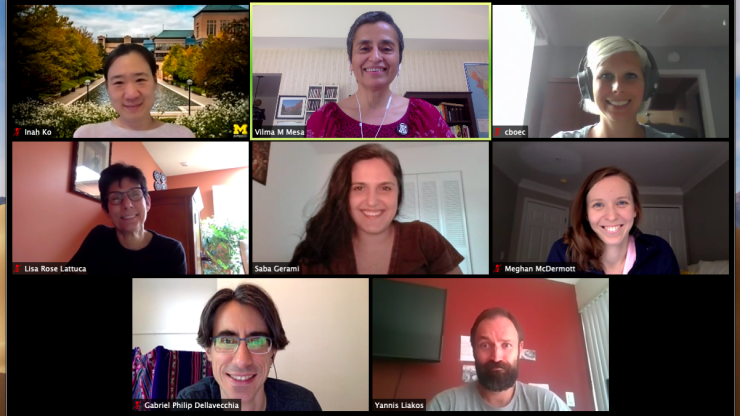Rebecca Quintana and James DeVaney announce Resilient Teaching through Times of Crisis and Change MOOC
SOE Lecturer and U-M Learning Experience Design Lead Rebecca Quintana, along with James DeVaney, Associate Vice Provost for Academic Innovation, wrote an article for Inside Higher Education about resilient teaching—which involves designing agile learning environments that adapt in the face of uncertainty—and their new online course that explores the topic.
In “Laying the foundation for a resilient teaching community,” the authors expanded on a previous blog post that identified the need to move from emergency remote teaching to resilient pedagogical approaches, and they shared plans for their community-oriented massive open online course (MOOC). “Together, we’re able to make sense of new constraints, and continue on a path to transformed access, inclusive learning communities, problem-based interdisciplinary learning, and multimodal design,” they wrote.
They noted that educators’ shared experience with sudden remote teaching due to the COVID-19 crisis has led to a larger shift in education itself, so they aim to elevate community collaboration, and introduce guiding principles of resilient design for learning in their course.
Their emergent definition of resilient teaching is based on recent events: “Our recent experiences have shown us that we will need to design with the possibility that the learning environments that we are designing for are not a known certainty. And indeed there is a real possibility that learning contexts and conditions will change in the midst of a course. We have adopted the phrase of resilient teaching to convey the idea that we are moving away from a temporary state to a more permanent and productive condition,” they said.
“We define resilient teaching as the ability to facilitate learning experiences that are designed to be adaptable to fluctuating conditions and disruptions…. Resilient teaching approaches take into account how a dynamic learning context may require new forms of interactions between teachers, students, content, and tools. Additionally, they necessitate the capacity to rethink the design of learning experiences based on a nuanced understanding of context.”
The Center for Academic Innovation launched the “Keep Teaching” website, hosted course design workshops, and launched an online teaching academy. In addition to those resources, they said, the MOOC can “provide our wider community of scholars and faculty with a resource that could inspire thinking about designing courses that are resilient and flexible as we consider a new normal for higher education.”
The MOOC, titled Resilient Teaching Through Times of Crisis and Change, is structured across four weeks. It begins by making a case for a timely resilient approach to course design. The course asks learners to examine a range of scenarios that could impact how faculty and students teach and learn. The course then examines the construct of resilience and situates it within a variety of disciplines. “Our intention here is to ground thinking in notions of resilience and inspire participants to apply a cross-disciplinary approach to course design,” they wrote.
The Learning Experience Design team, led by Quintana, is focusing the course on themes that emerged from a community survey. These include the intentional facilitation of learning across in-person, online, and other contexts; drawing on current evidenced-based frameworks to inform this new approach; and promoting actionable, practical approaches that are guided by solid pedagogy and informed by an interest in the wellbeing of students.
“The course is designed to support higher education faculty, lecturers, and graduate student instructors who will be required to rethink how they teach in the immediate or near future due to the ever-changing circumstances surrounding the COVID-19 crisis,” they said.
The course defines a resilient pedagogy, reflects on it, examines approaches for learning design, and specifies three guiding principles for resilient design for learning that are explored and reflected upon in the context of participants’ own course plans—with guiding examples and case studies from other instructors doing the same work. To support learning and reflection, they also offer a journaling tool within the course to allow participants to reflect on their experience. Participants can opt to share their journal entries with the wider course community in an interactive gallery space.
“Although instructors are currently being asked to consider different contingencies, by working through this process we hope to create courses that are responsive to various educational scenarios across a range of settings,” Quintana and DeVaney wrote.
Participants in the course will collaborate and help lay the foundation for a larger resilient teaching community. It starts on June 4 on the Coursera platform, which accepts late registrants.
“To be sure, the foundation we are building is still under construction. While we can imagine the broad contours of a resilient teaching community, we are intentionally non-deterministic about specific details. We believe this foundation will be strong because we are co-creating this approach with our peers.
“We invite you to become a part of this online community that seeks to learn from one another and to co-create a working definition of resilient pedagogy, describe attributes of such an approach, and identify strategies for cultivating resilient teaching practices,” they said.







